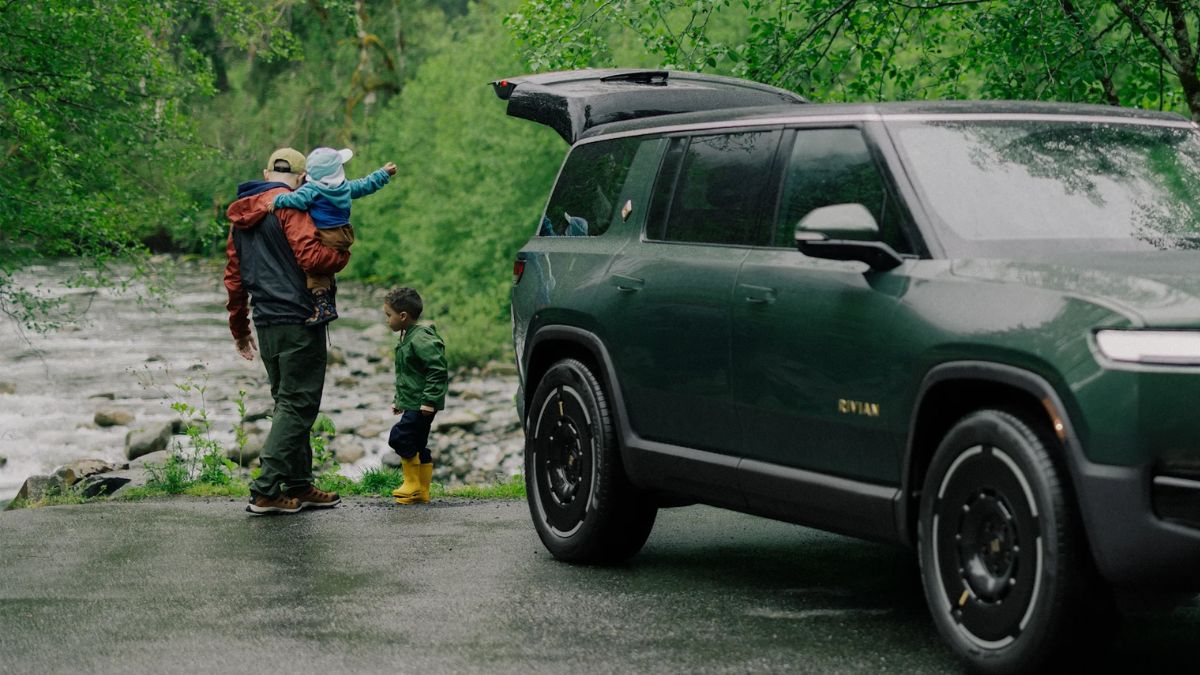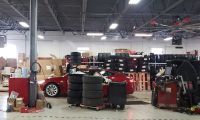Earlier tonight, I was doing what a lot of EV geeks do after dinner, scrolling through the “RIVIAN Electric Vehicles Discussion” group on Facebook, when I spotted a post that made me pause. It was one of those “this could totally happen to me” kind of moments. A Rivian owner named Vijay shared something that started off as a small annoyance but quickly turned into a growing concern. And honestly, the more I read, the more I thought, “Okay, this might be worth digging into.”
Vijay’s post was short, but it hit home for a lot of us: “Hello everyone, today I have experienced charger errors twice, and on both occasions, I was able to resolve the issue by unplugging and replugging the charger. However, I am concerned that there may be a more significant underlying issue that requires attention. I would appreciate any input on this matter.”
We’ve all been there, right? The ol’ “unplug it and plug it back in” move. It works for laptops, routers, and apparently EV chargers, too. But when you start doing it twice in one day, that’s when it stops feeling like a fluke and starts sounding like a whisper from the universe, or from your wiring.
The Fix That Works, Until It Doesn’t
What makes this kind of issue tricky is how deceptively harmless it seems. You plug in, error pops up. You unplug, try again, and boom, it works. Easy fix. But it’s also easy to ignore what could be an early red flag. We love when tech makes our lives easier… until it fails quietly, and we realize we had warning signs all along.
Vijay did the smart thing by putting his concern out to the community instead of brushing it off. And one of the most helpful replies came from a fellow member, Dak Simonton, who dropped a mini masterclass in charger diagnostics: "Double-check your outlet, wiring, breaker, and wire connections to the breaker. All should be good, tight, and show no signs of overheating or melting. It could also be the EVSE (charger) itself, there are internal connections that might work loose over time. If it’s still under warranty, it’s worth contacting the charger manufacturer for support; if it's a Rivian charger, file a service request. You could also consider calling a licensed electrician to inspect the setup thoroughly.”
I don’t know about you, but when someone starts talking about “loose connections that could overheat and melt,” that’s not something I want to play around with.
When Charging Problems Aren’t Just Inconvenient
Most EV drivers assume charging at home should be the easiest part of ownership, and usually, it is. But that assumption can go out the window fast when small errors start piling up. And these glitches don’t always announce themselves in big dramatic ways. Sometimes, it’s a weird message, a sudden disconnect, or something as minor as a longer-than-usual handshake between the car and charger.
Other times, it’s much worse. One owner shared a terrifying story about a melted EV plug that could’ve led to a house fire. And the scariest part? It didn’t start with smoke or sparks. It started with little charger hiccups that felt “normal.”
So yeah, Vijay’s concern isn’t overreacting, it’s a real wake-up call. These problems don’t always explode, sometimes, they quietly fizzle until something finally gives out.

There’s More Going On Than You Think Behind the Plug
Charging an EV might seem as easy as plugging in a toaster, but the reality under the hood (or behind the wall) is way more complex. Voltage, amperage, grounding, internal thermal sensors, it’s all working together, and one loose wire can throw the whole system off.
Take another example from a recent Torque News article about a 240V outlet that kept disconnecting during EV charging. That owner had no clue what the problem was, but it turned out to be an issue with their wiring and how the load was distributed.
The thing is, your car and your charger only tell you what they’re sensing. They can’t see what’s going on inside your breaker box or how your contractor wired the line. That’s why it’s important to dig deeper when weird issues pop up. You might think it’s just a charger bug, but it could actually be a setup that was never right from the beginning.
So What Should You Do If You’re in Vijay’s Shoes?
Here’s what I’d suggest based on community feedback, expert tips, and real-world experience:
1. Take a close look at the hardware
Check for melted plugs, heat marks, or any discoloration on your charger cable and outlet. If anything feels hot to the touch after a session, that’s not normal.
2. Look inside the breaker panel (or have an electrician do it)
A lot of EV charging issues can come from the circuit itself, especially if the connections are loose or improperly torqued. Your setup might have passed inspection when installed, but wires can shift or vibrate loose over time.
3. Try another EV or charger
If you have access to another vehicle, test it on the same charger. Or try your car on a different EVSE. That’ll help narrow down whether it’s the car, the charger, or the power source.
4. Use the app or diagnostics tool
If your charger comes with an app (like a Rivian Wall Charger or ChargePoint), check for error logs or temperature data. Some even let you adjust charging speed to see if the issue only shows up at higher loads.
5. File a service ticket or contact the manufacturer
If it’s a Rivian charger, start a support ticket through the app or call them directly. For third-party chargers, reach out to the manufacturer. Most are surprisingly responsive, especially if the unit is under warranty.
6. Don’t be afraid to call in a pro
Licensed electricians who specialize in EV installations are becoming more common. They know what to look for and can often spot issues that inspectors or DIYers miss.
The Charging World Isn’t Perfect Yet, Even in 2025
Vijay’s issue might be at home, but these kinds of hiccups happen out in the wild too. Fast-charging stations are notorious for inconsistent experiences, and it’s no surprise that public EV charging is still frustrating even to the experts. Between failed handshakes, charger incompatibility, and random network errors, it can feel like rolling the dice every time you pull up to a DC fast charger.
But whether it’s a Tesla Supercharger, a Rivian Adventure Network stop, or your home Level 2 setup, the takeaway is the same: don’t assume the charger is fine just because it works “most of the time.” That’s how you miss the warning signs.
Even other recalls like this one on Dodge Chargers show how small system communication problems can turn into major complaints, and they don’t always come down to faulty hardware. Sometimes, it’s just how one component talks (or fails to talk) to another.
My Take: Pay Attention to the Glitches, They’re Not Random
As someone who’s been writing about EVs for a while now, I’ve learned that most people don’t worry until something stops working entirely. But that’s exactly what makes EV ownership tricky, the failures are often subtle and quiet. A glitch here, a skipped charge there. Nothing huge, until the day you wake up late for work and your truck didn’t charge overnight.
That’s why I really admire how Vijay handled this. He didn’t wait. He spoke up, asked questions, and opened the door for a helpful discussion. It’s something I think we could all benefit from, especially in a world where electric vehicles are still evolving.
If you start getting those little “something’s off” moments with your charger, listen to them. Those moments are trying to tell you something, and it’s better to figure it out early than get stranded with an EV that won’t charge at all.
The Takeaway: Don’t Ignore the Small Stuff
Charging errors aren’t always obvious, but they’re rarely random. If you’re seeing repeated faults, even ones that go away after unplugging, take the time to look deeper. Get your setup checked out. Ask your community. Post your story like Vijay did. Because in the EV world, those small annoyances can be the start of something much bigger.
The future of driving is electric, but that future is only smooth if we take care of the infrastructure at home just as much as we care about what’s under the hood.
Have you ever had a weird charger error that kept happening until it didn’t? What’s your go-to troubleshooting move when your EV charging setup starts acting up?
Jump into the comments and share your story, you never know who it might help.
Narek Hareyan is a young automotive journalist with experience in a golf cart dealership and an interest in the automotive industry. Follow Narek on X for daily news coverage about cars.
Image source: Rivian Press Room











